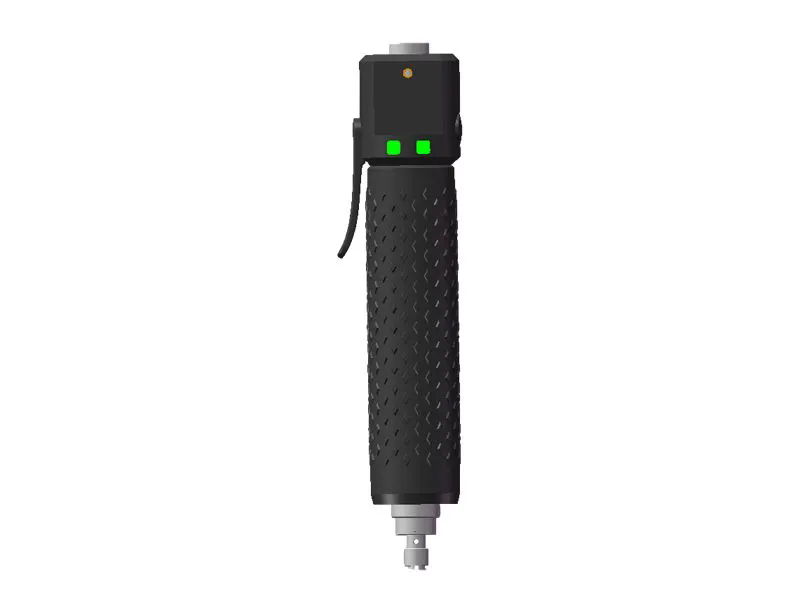What Are the Benefits of Using a Low Noise Servo Motor Screwdriver in Precision Assembly?
2024-11-06
In the fast-evolving world of manufacturing and assembly, tools that enhance efficiency and quality are essential. Among these tools, low noise servo motor screwdrivers are gaining significant attention. But what exactly makes these screwdrivers beneficial for precision assembly? Let’s explore the advantages, applications, and key features of low noise servo motor screwdrivers to understand their growing importance in modern production environments.
1. How Does a Low Noise Servo Motor Screwdriver Work?
A low noise servo motor screwdriver utilizes a servo motor to control the rotation of the screwdriver tip, allowing for precise torque application. Unlike traditional screwdrivers that operate on a fixed speed and power, servo motor screwdrivers adjust their performance in real-time based on the resistance encountered while driving a screw. This capability ensures that screws are tightened to the exact specifications required, reducing the risk of damage to the components being assembled.
2. What Are the Key Advantages of Low Noise Operation?
One of the standout features of low noise servo motor screwdrivers is their quiet operation. Traditional pneumatic or electric screwdrivers can generate significant noise during use, which can lead to uncomfortable working environments, especially in large-scale assembly lines. The low noise levels of servo motor screwdrivers not only enhance the comfort of workers but also contribute to better focus and productivity, making them ideal for settings where noise reduction is a priority.
3. Why Is Precision Important in Assembly Processes?
Precision in assembly is crucial for ensuring the quality and reliability of the final product. Low noise servo motor screwdrivers are designed to provide consistent torque control, which minimizes the risk of over-tightening or under-tightening screws. This precision is particularly important in industries such as electronics, automotive, and aerospace, where even minor variations can have significant consequences on product performance and safety.
4. In What Applications Are Low Noise Servo Motor Screwdrivers Most Effective?
Low noise servo motor screwdrivers are particularly effective in applications requiring delicate assembly tasks. They are widely used in the electronics industry for assembling circuit boards, where precision is critical. Additionally, these screwdrivers are suitable for medical device manufacturing and automotive assembly, where noise control and precision directly impact the quality of the products being produced.
5. How Do Low Noise Servo Motor Screwdrivers Enhance Operator Efficiency?
The use of low noise servo motor screwdrivers can significantly enhance operator efficiency. The feedback mechanism inherent in servo motors allows for real-time adjustments during operation, reducing the need for manual torque checks and increasing the speed of the assembly process. Furthermore, the ergonomic design of many servo motor screwdrivers helps reduce operator fatigue, allowing workers to maintain high levels of productivity throughout their shifts.
6. What Safety Features Should You Look for in These Tools?
When selecting a low noise servo motor screwdriver, safety features should be a top consideration. Look for models equipped with overload protection, which prevents damage to both the tool and the components being assembled. Additionally, features like automatic shut-off when the desired torque is reached can further enhance safety and prevent over-tightening.
7. How Can These Screwdrivers Improve Quality Control?
Incorporating low noise servo motor screwdrivers into assembly lines can lead to improved quality control. The precision of these tools minimizes defects caused by improper fastening, which can lead to product recalls and customer dissatisfaction. Furthermore, many servo motor screwdrivers come with data logging capabilities, allowing manufacturers to track torque application and ensure compliance with quality standards.
8. What Role Does Technology Play in Low Noise Servo Motor Screwdrivers?
Advancements in technology have significantly improved the performance of low noise servo motor screwdrivers. Features such as digital displays, programmable settings, and connectivity for data analysis have made these tools even more efficient and user-friendly. This technological integration allows manufacturers to adapt their assembly processes quickly and respond to changes in production demands.
9. How Do Low Noise Servo Motor Screwdrivers Compare to Traditional Tools?
Compared to traditional electric or pneumatic screwdrivers, low noise servo motor screwdrivers offer distinct advantages. Their ability to provide precise torque control and low noise operation makes them superior for delicate assembly tasks. While traditional tools may be less expensive upfront, the long-term benefits of enhanced precision, efficiency, and reduced noise often justify the investment in servo motor technology.
10. Why Should Manufacturers Consider Upgrading to Low Noise Servo Motor Screwdrivers?
For manufacturers seeking to enhance their assembly processes, upgrading to low noise servo motor screwdrivers can be a game-changer. The benefits of precision, noise reduction, and increased efficiency contribute to improved product quality and a more comfortable working environment. As the manufacturing landscape continues to evolve, investing in advanced tools like these screwdrivers will be essential for staying competitive.
Conclusion: Are Low Noise Servo Motor Screwdrivers the Future of Precision Assembly?
In conclusion, low noise servo motor screwdrivers represent a significant advancement in assembly technology. Their unique combination of precision, efficiency, and low noise operation makes them a valuable asset for modern manufacturing processes. As industries continue to prioritize quality and productivity, the adoption of low noise servo motor screwdrivers is likely to grow, setting new standards for precision assembly. If your manufacturing process is still reliant on traditional screwdrivers, now may be the perfect time to consider making the switch to these innovative tools for a more efficient and effective operation.



